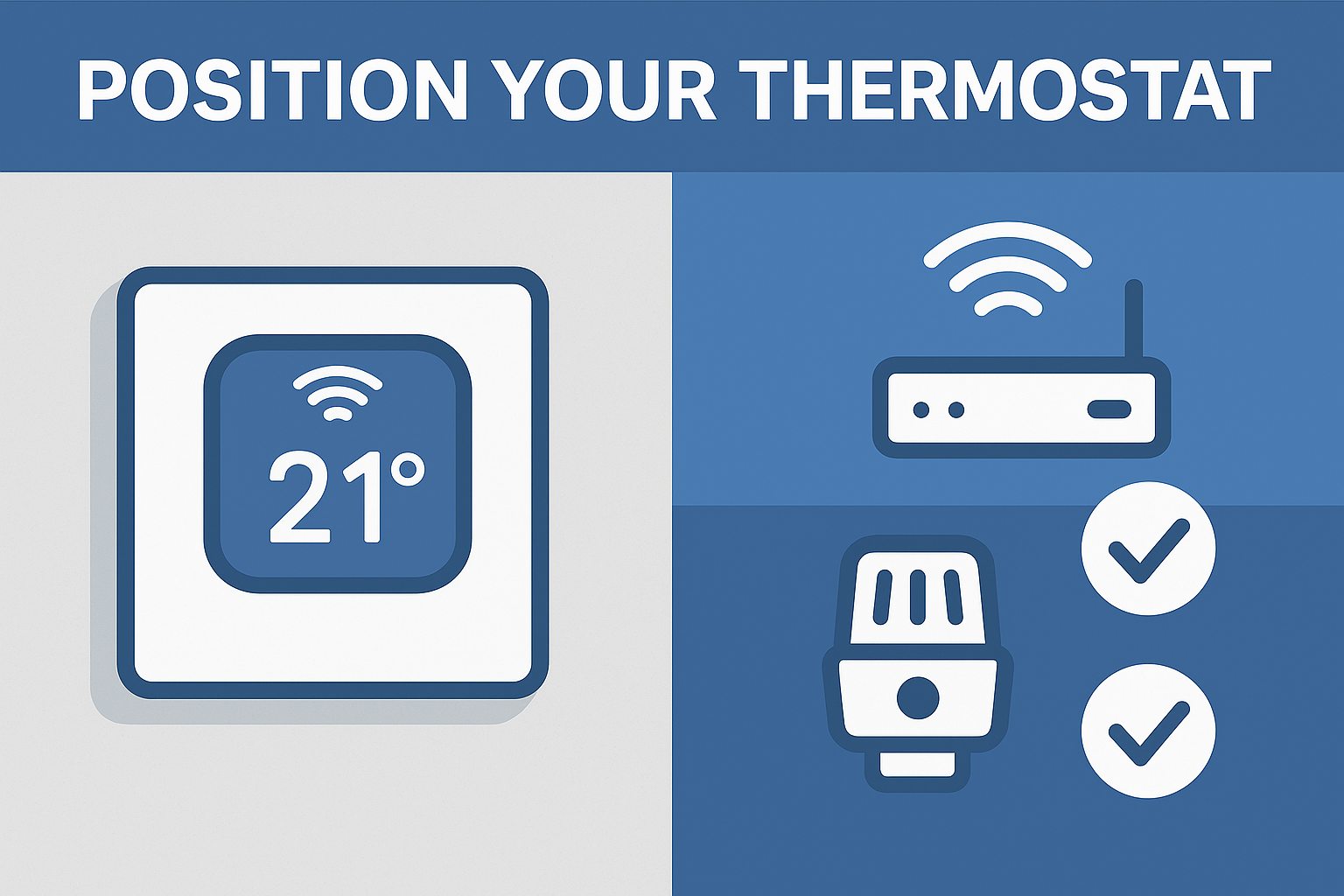Week 4: Position Your Thermostat
Posted on September 22nd, 2025

The Inspire Thermostats are designed for controlling heating remotely, improving efficiency, and keeping tenants comfortable. But if the thermostat isn’t in the right place — or can’t reliably connect to its receiver — it won’t work as intended.
This week, we’ll look at why thermostat position matters, how landlords can check placement and connections, and what advice to pass on to tenants.
Why Thermostat Position Matters
Thermostats measure the temperature of the air around them to regulate your heating system. If they’re poorly placed, they can give false readings — making the heating switch on or off at the wrong time.
A badly positioned thermostat can lead to:
- Overheating (if placed in a draught, hallway, or cold spot)
- Underheating (if placed near radiators, direct sunlight, or appliances)
- Signal problems (if Wi-Fi or receiver connection is weak)
Best Position for your Thermostat

- Around 1.5 metres above the floor
- In a central location where tenants spend time (living room, hallway between main rooms)
- In a room with a working radiator
- Away from:
- Radiators or heaters
- Direct sunlight
- Draughts or external doors
- Other sources of heat
- Behind furniture or curtains
This ensures it measures the average home temperature accurately.
How to Check Thermostat Connections
Our Wireless Thermostats rely on two connections:
- Wi-Fi link from the Receiver to the Internet Router
- Wireless link from the Thermostat to the Receiver
Our Wired models use one connection
- Wi-Fi link from the Receiver to the Internet Router (Ignite Touch in Wired Mode)
- Wi-Fi link from the Thermostat to the Internet Router (Ignite Wired)
Steps to Check
- Check your App – Signal strengths are shown on the diagnostics page. If you make any changes to the position or Wi-Fi, please allow 5 minutes for the system to update its signal.
- Check Wi-Fi signal strength – If the system loses Wi-Fi connection, test the signal with a smartphone in the same location. If weak, consider a Wi-Fi extender or Mesh network.
- Check for interference – Thick walls, metal objects, or other wireless devices nearby can reduce signal reliability.
- Signal Path – The signals will travel in a straight line from point to point. It will not bend around corners. Every object the signal passes through will decrease its strength.
DIY Tips for Landlords (If signals are an issue)
- Move the thermostat temporarily (if it’s wireless) to test alternative positions.
- Consider a signal booster if you cannot get a good signal.
- Ensure the internet router is not on the floor, a window cill or behind a TV surrounded by cables. Ideally, it should be positioned centrally for reliable signal.
- Consider a Wi-Fi extender (small properties) or Mesh Network (larger properties).
Tenant Advice
Landlords should remind tenants:
- Don’t cover the thermostat with furniture, curtains, or decorations.
- Don’t use portable electric heaters — apart from fire hazards and expense, this will also gives false readings.
- Report Wi-Fi issues early — if the thermostat disconnects often, the landlord may need to check signal strength, relocate equipment or purchase signal boosters.
Take Action This Week
By checking thermostat position and connections now, you’ll:
✅ Ensure accurate temperature control
✅ Avoid wasted energy and high bills
✅ Keep tenants comfortable and reduce complaints